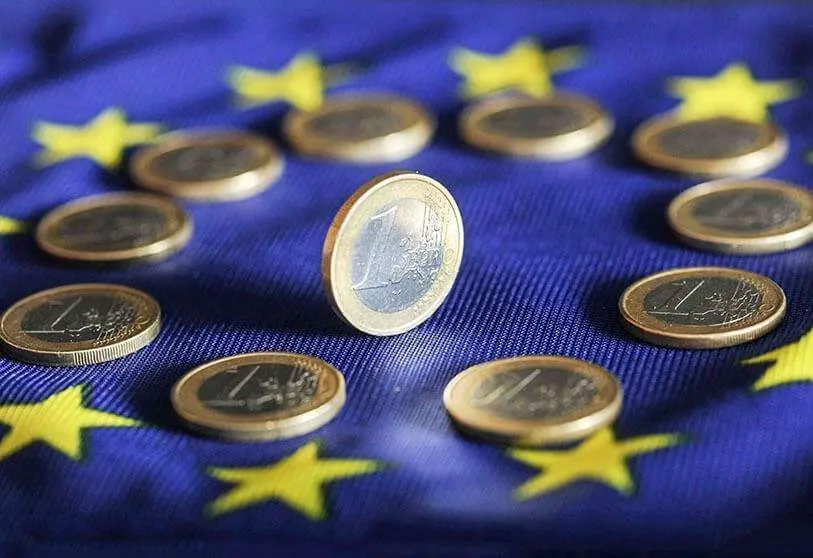The invasion pushes the world into recession

At the time of writing this column, the value of the euro against the peso continues to plummet. To buy one euro you need 19 pesos and 49 cents, and last February you had to put in 26 pesos. The weakness of the single European currency is a clear symptom of the fact that Europe is the epicentre of the current economic crisis, firstly because of the Russian invasion of Ukraine and secondly because of the catastrophic consequences of a historic accumulation of sanctions imposed on Russia by the United States and its European and Asian allies.
Since the invasion began (on 24 February) European leaders have decided to shoot themselves in the foot in support of Ukraine, as Balkan and other Eastern European countries feared they would be next in line for the military occupation engineered by Russian dictator Vladimir Putin and his advisors.
With each escalating rung of sanctions and more sanctions, and an enraged Europe supporting the government of Volodymir Zelensky with military equipment, weapons and military intelligence, Russia's counter-response has - as expected - hit the nail on the head of Europe's weakness: its enormous energy dependence on Russian oil and gas, but also on Ukrainian and Russian grains and cereals.
In the run-up to the long European winter, Putin is playing his trump card and will want to punish Europeans by letting them freeze and starve to death without gas or electricity. Hitler and his Nazi troops used the same old strategy when they tried to take Stalingrad in that bloody siege of hunger and cold that ended on 2 February 1943.
And while the arrival of winter is regarded with uncertainty (and fear), the International Monetary Fund (IMF) has delivered the shock it had already announced a few days ago: the world economy is cooling not because of winter but because of the bloody invasion, now a war that has been raging for more than seven months and shows no sign of ending. What is more, nobody knows how to end it, nor how it will end.
If inflation seemed to be passing in several countries due to the imbalance between production and delivery services as a result of the confinements and restrictions of the pandemic, the spectre has finally come out of the wardrobe and will remain with us for several long months.
If by 2022, the IMF expects a global GDP of 3.2% and global inflation of 8.8%, what the international body is talking about is dangerous stagflation; one of the most damaging economic disorders to the workforce and to the social fabric because it is an income and welfare destroyer. It is a cannibal of purchasing power and forces central banks to spiral up rates trying to rein in the monster and the consequence, just around the corner, is a financial crisis with banks failing, families losing their mortgages and homes, financial meltdowns, foreclosures and government bailouts. The destruction.
For 2023, the outlook looks more negative, so says the IMF, it will be for the duration of the war. For world GDP it estimates a growth of 2.7% and the advanced economies will suffer to a large extent even a recession.
The eurozone will grow marginally by 0.5 per cent but two very important economies will enter recession, Germany, the European locomotive, is expected to fall by 0.3 per cent and Italy, its GDP, by 0.2 per cent.
Emerging economies look set to be better off in both 2022 and 2023: if advanced economies will grow by 2.4 per cent on average in 2022 and 1.1 per cent in 2023, emerging economies would have an average GDP of 3.7 per cent this year and 3.7 per cent next year.
While the United States, determined to push Putin through all the pressure of sanctions and military aid to Ukraine, will only grow by 1.6% this year and 1% in 2023, China's economy will grow by 3.2% in 2022 and 4.4% in 2023. The most envied will be India, with an estimated GDP of 6.8% in 2022 and 6.1% in 2023 and within Latin America, Mexico will grow by 2.1% this year and GDP is expected to grow by 1.2% next year.
But what about the Russian economy? More than eight extremely tough rounds of sanctions of all kinds have been imposed by Washington and its allies in an attempt to isolate Russia. However, the Russian economy is reportedly falling by 3.4% in 2002 and 2.3% next year, proving that the punishment has been harsher for the US and especially the eurozone than for Russia itself.
Sanctions have been a fiasco. Not only in February did European leaders decide to shoot themselves in the foot, but several months later, the shot has already been taken in the other leg and has left the European economy limping towards recession with Europeans thundering their fingers with uncertainty in the background.
And no one is talking about peace, but rather about giving Kiev weapons. The G7 in an extraordinary telematic meeting with Zelenski agreed to give it more weapons, especially NASAMS anti-aircraft defence systems to be sent by the United States, while Germany has already supplied it with other IRIS-T anti-aircraft equipment. The representatives of these seven countries warned Putin that he will be held accountable.
NATO, too, in the voice of Jens Stoltenberg, confirms that it will continue to support Ukraine with new weaponry and, emboldened, announces that next week it will hold military exercises on nuclear deterrence. There is no time for peace and that is frightening, because in this spiral, Europe is caught up in the power struggle between the United States and Russia, both pulling the rope tighter and tighter. Recession means hunger...

